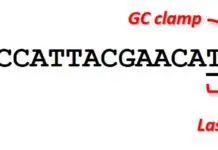When it comes to quantifying nucleic acids, there are two preferred main platforms: the Qubit and the Nanodrop. Both work slightly differently and have their own perks. In this article, I will compare the two platforms in terms of nucleic acid analysis (not protein) so you can judge which is the better option to suit your needs.
Mastering qPCR
Additional information on the use of the Nanodrop and Qubit can be found in our Mastering qPCR course.
>>Use code 20QPCR to get 20% off<<
The Qubit
The Qubit is a sleek little fluorometer. The touchscreen device is very basic and can work without a computer. Simply plug it in and you’re ready to read. All measurements are tube-based, so no cleaning required! However, prior preparation with compatible reagents is required, meaning each sample read will come at a small cost.
Why you would use a Qubit
The main attraction for using a Qubit is when you have samples with very low concentrations of nucleic acids. The sensitivity of the Qubit can be as low as 10 pg/mL, which is far superior to the Nanodrop. So, if you worry your samples have very low concentrations, it is best to use the Qubit.
Another advantage the Qubit has over the Nanodrop is its specificity. The necessary reagents enable specific binding to the nucleic acid of interest, meaning concentrations are not affected by the presence of other contaminants. Thus, if you have samples with DNA and RNA in, it is best to use the Qubit to determine the concentration.
Recently, the latest Qubit devices (Qubit 4) can determine RNA quality, similar to that given on a 2100 Agilent Bioanalyzer. An IQ score is given, ranging from 1 to 10, with larger values indicating a higher quality RNA.
The advantages
- Incredible sensitivity – The Qubit can detect minute concentrations of nucleic acids (down to 10 pg/mL!) making it far superior to any ultraviolet absorbance method.
- Accurate readings – Since the Qubit’s reagents are specific to their target, the presence of contaminants in samples will not interfere with the concentrations.
- Scalable sample volumes – A nice feature of the Qubit is that it can handle variable sample volumes (between 1 – 20 μL). This is very useful when there are samples with low concentrations that require more sample to be loaded into the machine to get a reading.
- Can determine RNA quality – The latest Qubit now has reagents available that can determine the integrity of RNA.
The disadvantages
- Lack of purity analysis – The big downside when using the Qubit is that there is no output for purity measures.
- Preparation time – Only a slight negative, but since the readings require prior mixing with reagents, it takes a little longer to get those all-important readings.
- Cost per measurement – Since reagents are required to run the machine, there is a small cost per sample measurement attached to using the Qubit.
The Nanodrop
The Nanodrop is an ultraviolet spectrophotometer, as opposed to a fluorometer (although there is one fluorescence version available). It is slightly larger than the Qubit but comes with a touch-screen interface (Nanodrop One) or the ability to connect to a computer. This is because the Nanodrop’s output goes beyond just measuring concentrations, it can determine the purity of the sample too.
Unlike the Qubit, all measurements on the Nanodrop are performed on a pedestal. This requires just 1-2 μL of sample – no reagent preparation or the use of standards is required!
Why you would use a Nanodrop
The main advantage the Nanodrop has over the Qubit is the ability to measure the purity of the sample. The 260/280 and 260/230 ratios give an indication of how pure the sample is from protein and salt contaminants. This is particularly useful since the presence of contaminants can often hinder downstream applications, such as qPCR.
Another bonus the Nanodrop has is the ability to run without the use of other consumables. The machine doesn’t require any reagents so sample measurements do not come at a cost.
The advantages
- Purity measures – A main feature of the Nanodrop, is the output of purity measures. The 260/230 and 260/280 ratios can indicate the presence of salt and protein contaminants.
- No preparation required – Using the Nanodrop is a breeze, no sample preparation is required. Just load the sample onto the pedestal and click Measure!
The disadvantages
- Prone to contaminants – Sample readings are very prone to the presence of contaminants. For example, both DNA and RNA absorb at 260 nm, therefore having both in the same sample can overestimate concentration readings.
- Lack of sensitivity – It is not recommended to measure samples with a concentration below 10 ng/mL since the readings will not be accurate.
- Cleaning required – Only a minor pet hate, but using the Nanodrop requires cleaning. This can also impact the results if the machine wasn’t cleaned properly.
Conclusion
As you can see, there are pros and cons to using both systems. In an ideal world you would use both – the Qubit for accurate concentration readings and the Nanodrop for purity measures. Of course, not every lab has the luxury of having both systems. Hopefully, this article has given you some direction on which platform is best to suit your needs.




Good explanation…thanks..